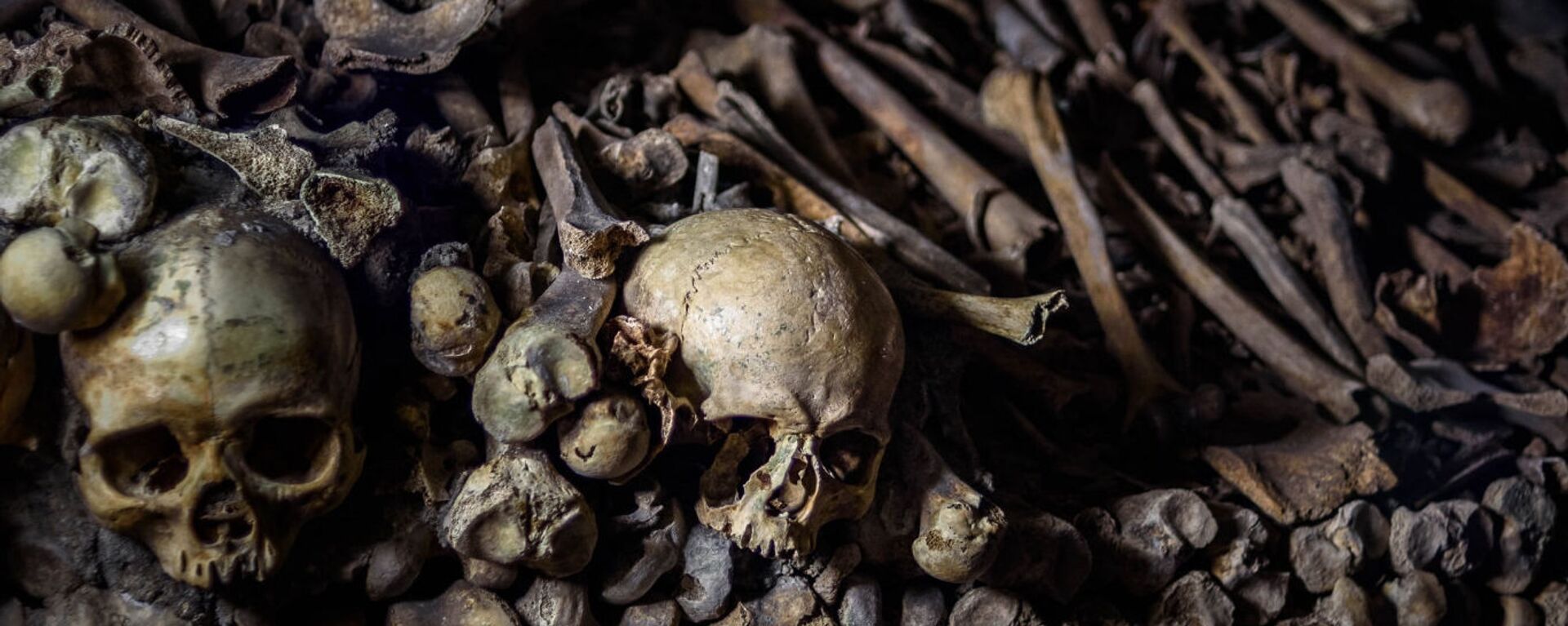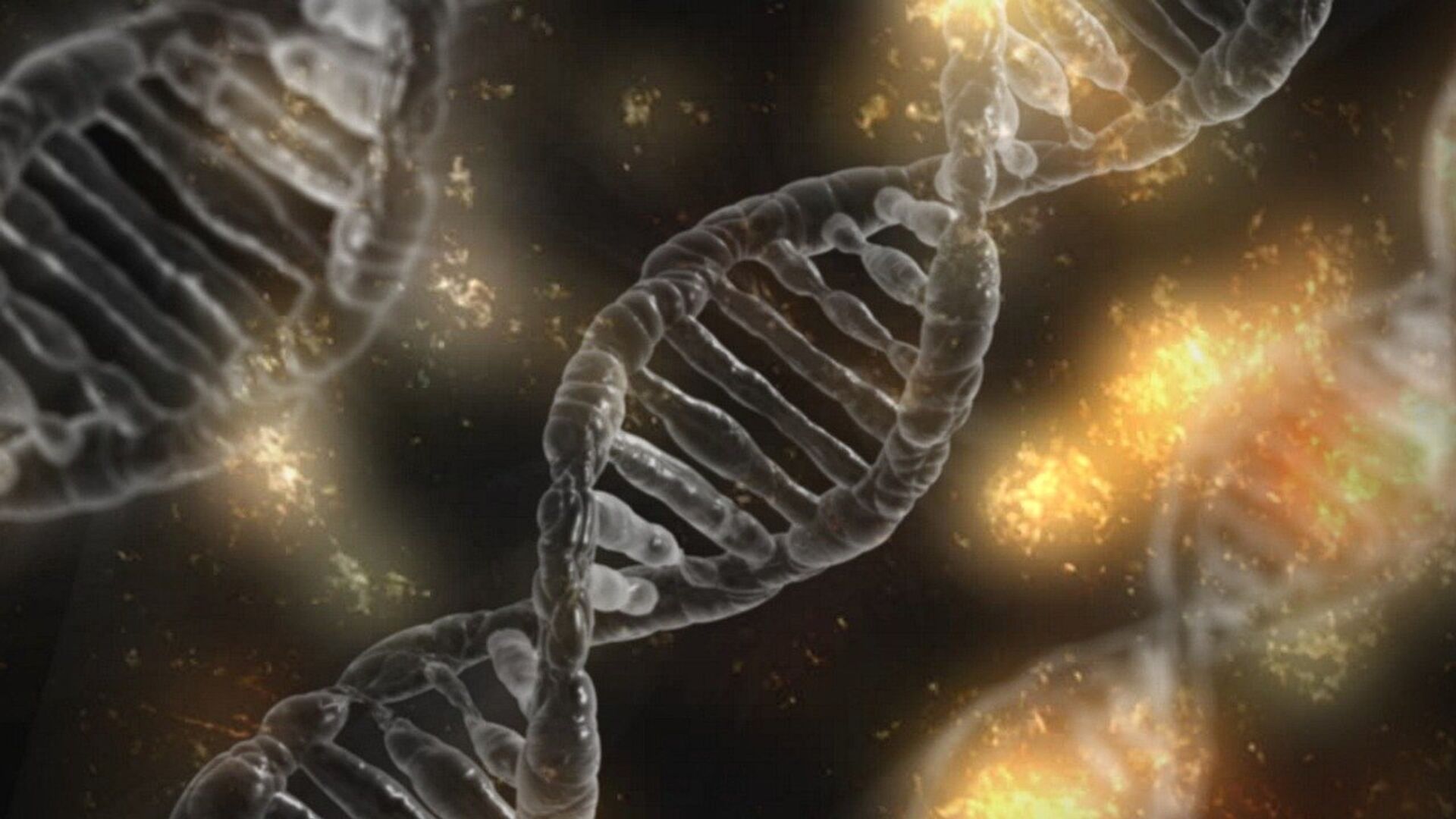https://sputnikglobe.com/20220906/viking-feces-assist-scientists-in-recreating-genome-of-prehistoric-human-parasite-1100431768.html
Viking Feces Assist Scientists in Recreating Genome of Prehistoric Human Parasite
Viking Feces Assist Scientists in Recreating Genome of Prehistoric Human Parasite
Sputnik International
While rare in industrialized parts of the world, the whipworm is estimated to infect up to 795 million people worldwide, particularly in areas with poor... 06.09.2022, Sputnik International
2022-09-06T11:15+0000
2022-09-06T11:15+0000
2023-04-21T10:42+0000
science & tech
scandinavia
parasites
vikings
https://cdn1.img.sputnikglobe.com/img/105130/97/1051309722_0:0:1280:720_1920x0_80_0_0_ecdb89ab30e0176ff49c86221ec76b34.jpg
DNA extracted from fossilized fecal matter used by Vikings and ancient Norsemen up to 2,500 years ago has given researchers a new insight into the relationship between humans and concomitant parasites.Among others, the findings revealed that the whipworm (Trichuris trichiura) has been living with humans and adapting to them for at least 55,000 years, appearing to have spread alongside early humans from Africa. The whipworm is a parasitic roundworm associated with helminthiasis, which infects the human large intestine. Its name refers to its shape: it looks like a whip with “handles” at the posterior end.Its effects are rather dubious, as in some cases a mild case of whipworm infection is known to have a beneficial effect on a healthy host, increasing the diversity of healthy gut bacteria. However, in case of severe infection, the consequences are rather unpleasant, including dysentery, anemia, and rectal prolapse, as well as potentially inhibiting healthy growth in children.Once the worm is safely inside the intestine, up to 20,000 eggs a day are laid. They have tremendous longevity and can survive even if expelled through feces and consumed by a new host. The eggs have a shell of hard chitin, which preserves the DNA in a risk-free way.It is the eggs obtained from ancient latrines in Viking settlements in Viborg and Copenhagen (both in Denmark), as well as other places in Europe, that allowed researchers to map out the ancient DNA. Christian Kapel of the University of Copenhagen stressed that during the Viking Age and well into the Middle Ages, the living conditions were rather unsanitary and didn't include separated cooking and toilet facilities.Although the worm is a rarity in industrialized parts of the world, it is still estimated to infect up to 795 million people worldwide, particularly in regions with poor sanitation. The eggs are passed on with human feces, whereupon the contaminated matter reaches soil or water and is digested by another host. Researchers are hopeful that the findings will help design more effective drugs.Earlier, fecal matter, this time from sheep, helped challenge the established Viking hypothesis of the Faroe Islands colonization. Lipid molecules known as fecal biomarkers found in sediment cores from an old Norse farm on the archipelago situated between Norway, Iceland, and Scotland had a distinct signature of digestive tracts of sheep dated to 500 AD, several centuries before the advent of the Norsemen. Since all mammals present on the islands were initially introduced by mankind, traces of sheep feces are thus a clear indicator of a human presence. Previous genetic profiles, the etymology of numerous Faroe place names, and grave markings point toward a Celtic population.
https://sputnikglobe.com/20210830/sequenced-dna-sheds-light-on-origins-of-first-scandinavians-1083749587.html
scandinavia
Sputnik International
feedback@sputniknews.com
+74956456601
MIA „Rossiya Segodnya“
2022
News
en_EN
Sputnik International
feedback@sputniknews.com
+74956456601
MIA „Rossiya Segodnya“
Sputnik International
feedback@sputniknews.com
+74956456601
MIA „Rossiya Segodnya“
science & tech, scandinavia, parasites, vikings
science & tech, scandinavia, parasites, vikings
Viking Feces Assist Scientists in Recreating Genome of Prehistoric Human Parasite
11:15 GMT 06.09.2022 (Updated: 10:42 GMT 21.04.2023) While rare in industrialized parts of the world, the whipworm is estimated to infect up to 795 million people worldwide, particularly in areas with poor sanitation. Its eggs are passed on with human feces, and are ingested by the next host, often with water. The ambition is that the findings will help design more effective drugs.
DNA extracted from fossilized fecal matter used by Vikings and ancient Norsemen up to 2,500 years ago has given researchers a new insight into the relationship between humans and concomitant parasites.
Among others, the findings
revealed that the whipworm (Trichuris trichiura) has been living with humans and adapting to them for at least 55,000 years, appearing to have spread alongside early humans from Africa. The whipworm is a parasitic roundworm associated with helminthiasis, which infects the human large intestine. Its name refers to its shape: it looks like a whip with “handles” at the posterior end.
Its effects are rather dubious, as in some cases a mild case of whipworm infection is known to have a beneficial effect on a healthy host, increasing the diversity of healthy gut bacteria. However, in case of severe infection, the consequences are rather unpleasant, including dysentery, anemia, and rectal prolapse, as well as potentially inhibiting healthy growth in children.
Once the worm is safely inside the intestine, up to 20,000 eggs a day are laid. They have tremendous longevity and can survive even if expelled through feces and consumed by a new host. The eggs have a shell of hard chitin, which preserves the DNA in a risk-free way.
It is the eggs obtained from ancient latrines in Viking settlements in Viborg and Copenhagen (both in Denmark), as well as other places in Europe, that allowed researchers to map out the ancient DNA. Christian Kapel of the University of Copenhagen stressed that during the Viking Age and well into the Middle Ages, the living conditions were rather unsanitary and didn't include separated cooking and toilet facilities.
Although the worm is a rarity in industrialized parts of the world, it is still estimated to infect up to 795 million people worldwide, particularly in regions with poor sanitation. The eggs are passed on with human feces, whereupon the contaminated matter reaches soil or water and is digested by another host. Researchers are hopeful that the findings will help design more effective drugs.

30 August 2021, 07:02 GMT
Earlier, fecal matter, this time from sheep, helped challenge the established Viking hypothesis of the Faroe Islands colonization. Lipid molecules known as fecal biomarkers found in sediment cores from an old Norse farm on the archipelago situated between Norway, Iceland, and Scotland had a distinct signature of digestive tracts of sheep dated to 500 AD, several centuries before the advent of the Norsemen. Since all mammals present on the islands were initially introduced by mankind, traces of sheep feces are thus a clear indicator of a human presence. Previous genetic profiles, the etymology of numerous Faroe place names, and grave markings point toward a Celtic population.


